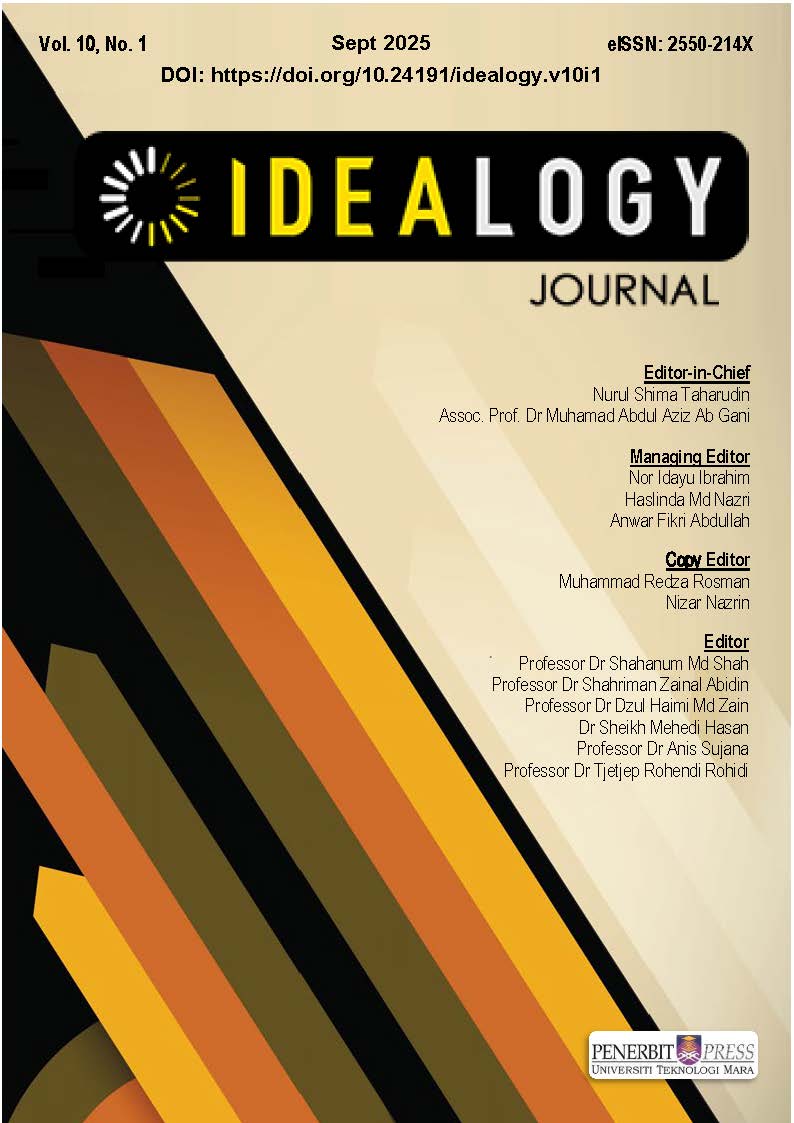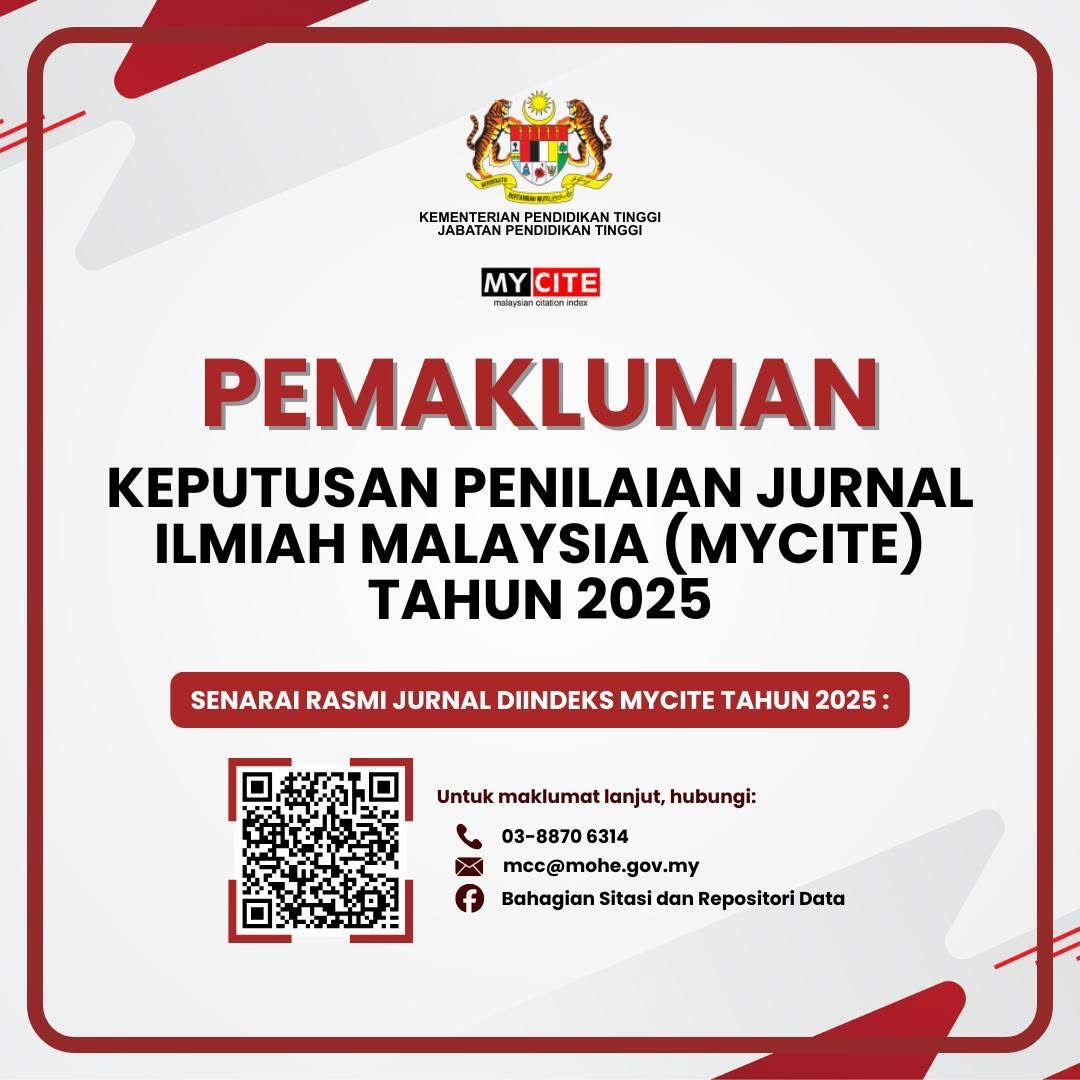Persepsi Dan Kesan Kewujudan Mural Terhadap Ekonomi Masyarakat Di Ipoh
Perception and Impact of Mural Existence on the Economy of the Community in Ipoh
DOI:
https://doi.org/10.24191/idealogy.v10i1.766Keywords:
Perception, mural, aesthetics, economy, IpohAbstract
The negative perception of wall paintings has shifted from being considered vandalism to being appreciated as art that enhances the environment. In the past, murals were painted on school walls to spark students' interest in learning by depicting natural landscapes and technology. Today, murals beautify public and commercial buildings, promote brands and products, and attract tourists. Mural art has existed since prehistoric times, as evidenced by the paintings in the Lascaux Caves, France, and has been used as a form of communication and storytelling of daily activities. Research shows that murals can enhance aesthetic value, provide identity, and strengthen community pride. Additionally, they have a positive economic impact by attracting tourists and increasing property values, which in turn encourages investment in the area. A survey conducted in Ipoh City, Perak, found that the majority of respondents have a positive perception of murals, recognizing them as a means to beautify the surroundings, convey information, and reflect local culture. This study confirms that murals have a positive impact on both society and the local economy, although there may still be negative perceptions if they are seen as disruptive.
References
Astro Awani Online. (2023). Lukisan mural di SK Methodist ACS Kampar jadi tarikan terbaharu di Perak. Retrived from https://www.astroawani.com/berita-malaysia/lukisan-mural-di-sk-methodist-acs-kampar-jadi-tarikan-terbaharu-di-perak-435524? on 05 January 2024.
DIVA.MY (2014). Jejak Seni Mural’ Tarikan Terbaru di Ipoh. Retrived from https://diva.my/2014/47562/jejak-seni-mural-tarikan-ipoh/ on 05 January 2024.
Barrett, T. (1994). Criticizing Art: Understanding the Contemporary. Mountain View. California: Mayfield Publishing Company.
Konting, M. M. (2004). Kaedah Penyelidikan Pendidikan. Kuala Lumpur: Dewan Bahasa Dan Pustaka.
Landi, P. J. (2012). Public art - Purpose and benefits: Exploring strategy in the new England City Of Pittsfield, Massachusetts. Master Thesis.
Miles, M. B, & Huberman , A. M. Qualitative Data Analysis: An Expended Sourcebook, Second Edition. Carlifonia: SAGE Publication, Inc.
Mustafa, M. (2009). Public art in the Federal Territory of Putrajaya: Questions of value and role. Wacana Seni Journal of Arts Discourse. Jil./Vol.8, P. 69-96.
Nur Adibah Nadiah Mohd Aripin, Noor A’yunni Muhammad (2017). Seni Kelarai Dan Seni Mural: Pertembungan Timur Dan Barat. Idealogy, 2(2) : 116-121, 2017
Omar,S. S., Md Sakip, S. R. & Mt Akhir, N. (2016) Bringing the New to the Old: Urban Regeneration through Public Arts, Procedia - Social and Behavioral Sciences, Volume 234, P. 515-524.
Puspita Giri, K. R., Utami, N. W. A., Persada N. G. E. & Putra I. D. G.(2021). Mural Sebagai Media Eduksi Pelestarian Kebudayaan Daerah. Jurnal Lentera Widya, Vol.2, No.2, P. 1-11.
Sadatiseyedmahalleh, S. Rahman, S. &Abdullah, A. (2015). Analyzing Street To Present The Heritage of George Town, Malaysia. Proceeding: International Journal of Multicultural and Multireligious Understanding (IJMMU) Vol. 2, No. 4, P. 24-30.
Schneller, A.J. & Irizarry, A. (2014) Imaging conservation: Sea turtle murals and their effect on community pro-environmental attitudes in Baja California Sur, Mexico, Ocean & Coastal Management, Volume 89, P. 100-111.
W. Mohd Apandi W. N. (2018). Perbezaan Seni Mural Dan Grafiti. Idealogy Journal of Arts and Social Science, 2018, Vol. 3, No. 1, P. 75-80
Wahiza Abdul Wahid (2011). Sejarah Seni Lukis & Seni Reka – Satu Pengenalan. Perpustakaan Negara Malaysia.
Downloads
Published
Issue
Section
License
Copyright (c) 2025 UiTM Press

This work is licensed under a Creative Commons Attribution-NonCommercial-NoDerivatives 4.0 International License.
UiTM Press (the Publisher) has agreed to publish the undersigned author’s paper in Idealogy Journal. The agreement is contingent upon the fulfilment of a number of requirements listed below.
1. The undersigned author warrants that the paper entitled below is original, that it is not in any way libellous or unlawful in Malaysia, that it does not infringe any copyright or other proprietary right. The undersigned hereby represents and warrants that he/she is the author of the paper, except for material that is clearly identified as to its original source, with permission notices from the copyright owners where required. The undersigned represents that he/she has the power and authority to sign and execute this agreement.
2. The undersigned author warrants that the paper entitled below has not been published elsewhere, and also it will not be submitted anywhere else for publication prior to acceptance/rejection by this Journal.
3. By submitting the paper entitled below, the undersigned author agrees to transfer the rights to publish and distribute the paper in an international e-journal (entitled above) to Publisher.
4. The undersigned author agrees to make a reasonable effort to conform to Publisher's submission guidelines and to liaise with the editor to ensure that the requirements of these guidelines are met to a reasonable degree.
5. The corresponding author signs for and accepts responsibility for releasing this material on behalf of any and all coauthors. This agreement is to be signed by at least one of the authors who has obtained the assent of the co-author(s) where applicable. After submission of this agreement signed by the corresponding author, changes of authorship or in the order of the authors listed will not be accepted.



